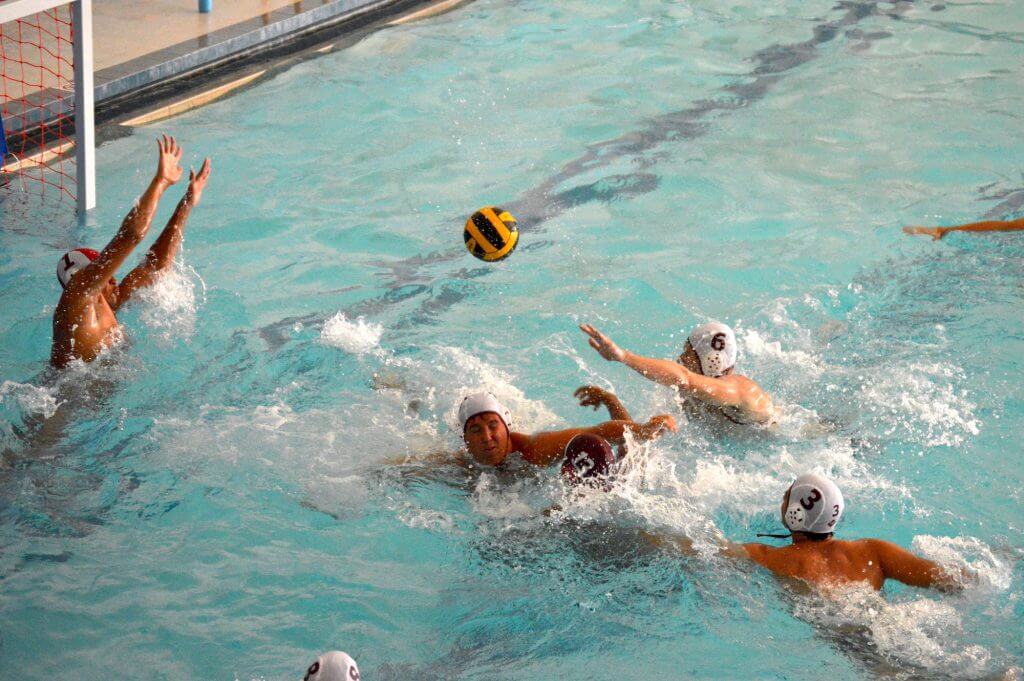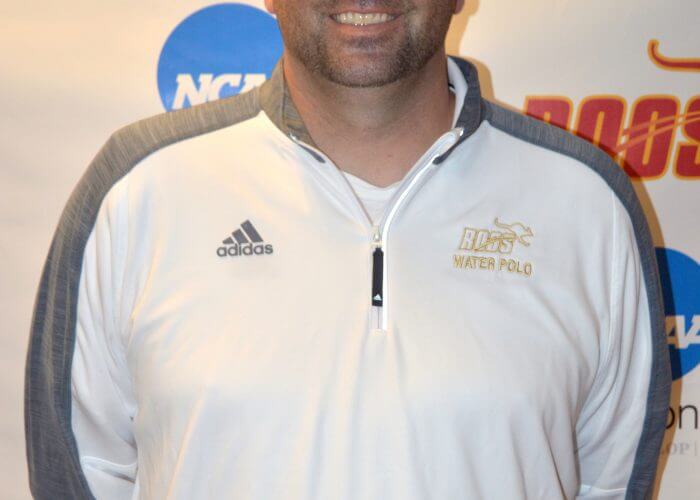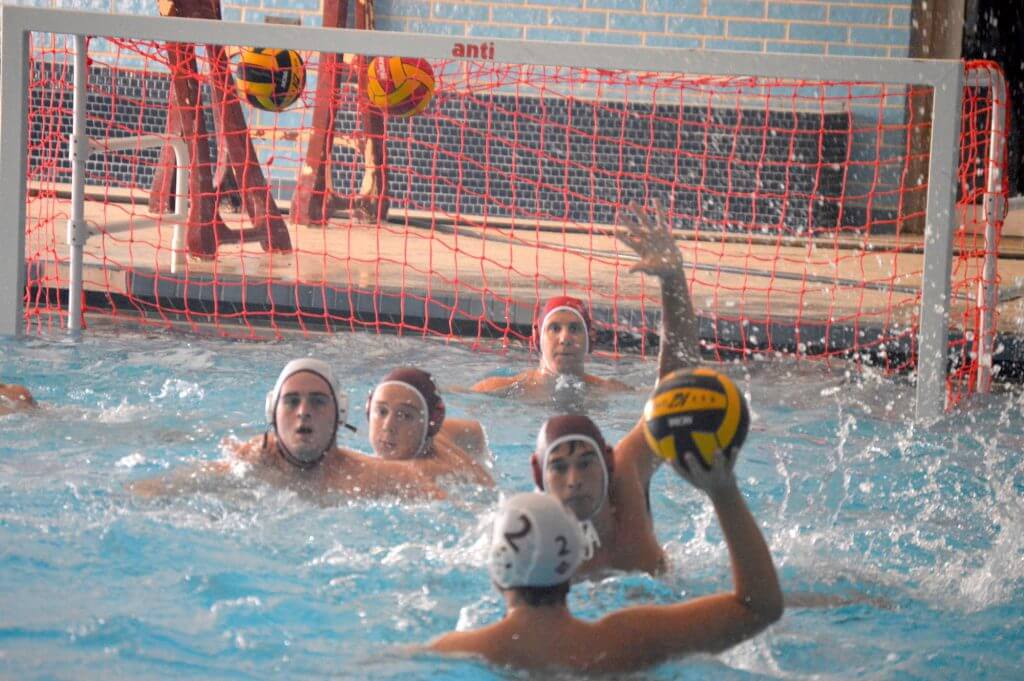Five Questions for Mark Lawrence, Head Coach of Austin Men’s and Women’s Water Polo

By Michael Randazzo, Swimming World Contributor
One of the most exciting recent developments in NCAA varsity polo is the arrival this fall of a new men’s program at Austin College in Sherman, Texas. Another college adding men’s or women’s varsity polo is hardly novel; in the past three years programs have popped up at Fresno State, LaSalle, McKendree and Wagner. Rather, it’s Austin’s location in the heart of one of the country’s fastest growing polo regions that has observers optimistic that perhaps the Lone Star State will accelerate the sport’s boom.

Which is why Mark Lawrence—who has worked at many of the country’s top programs—is the best person to lead what may be this fall’s most closely watched men’s polo team. After leading the Knights of Queens College to the 2002 NCAA Men’s Water Polo Final Four, in 2005 Lawrence earned a degree from San Francisco State University. Extending his playing career with the Queensland Breakers Water Polo Club in Brisbane, Australia, he finally hung up his cap in 2009 for a graduate assistant’s position under Todd Clapper, Arizona State head women’s water polo coach.
In 2011 a full-time head coaching opportunity opened up at the Massachusetts Institute of Technology, where Lawrence led the Engineers to 21 victories over two seasons. Following an assistant coaching stint under Felix Mercado at Brown, in 2014 he took the top assistant job at the U.S. Naval Academy.
In addition to working as an assistant at Navy, Lawrence worked with young players from New England, Pennsylvania, and Virginia as a head coach for USA Water Polo’s Olympic Development Program’s Northeast Zone.
While working to get his men’s program ready for its first-ever NCAA varsity season, Lawrence corresponded with Swimming World about his program’s strategic location, the school’s decision to join the Mountain Pacific Sports Federation (MPSF)—the country’s best water polo conference—and what the new season means for the country’s newest varsity water polo program.
– Your program is positioned almost exactly between polo’s two major poles: the East and West coasts. There’s no question that scheduling opponents is a challenge; what’s been your general strategy for this inaugural season and how do you envision this situation changing over the next few years?
Our geography is definitely a challenge for our schedule, but with that said our first goal is to get as many games against both East and West Coast DIII programs, as well as scheduling games against other high academic schools. We don’t want to limit ourselves to this model completely, but try to have a large portion of our schedule represent it.

Kangaroos’ Mark Lawrence. Photo Courtesy: Austin College Athletics
– Now that Austin is playing varsity polo in one of the most fertile areas for the sport outside of California, what are the prospects for other Texas schools to help grow the sport at the collegiate level?
We are extremely excited about the honor and challenge of being the first varsity program in Texas. I am confident that other programs in our region—universities both smaller and larger, will follow our lead. With that said, we have to make sure we are building a program with high character athletes who value their education while we provide a great student athlete experience.
As the high school level grows and becomes an official varsity high school sport, our goal is to have a respected program that grows with them.
– The Kangaroos have had a year of club play under their belt—but now their games count in the NCAA record books. What do you expect from your young squad in their first year of varsity competition against the likes of Brown, Bucknell, Harvard and others?
With such a young program, mainly of freshmen, I wanted to compete against programs that I have a great deal of respect for. Compete against coaches who I feel do an outstanding job creating a culture that we as a young team can learn from.
Our first weekend of competition really represents that. Austin College is a very strong academic school, so I want my young players to see the success that other high-level student athletes have created and experienced for themselves.
We are really building for the future and this year will be at times education through experience; having the honor to play Brown multiple times, Harvard and Bucknell, my young athletes can learn a lot in and out of the water. We will also have similar experiences when we go west as well.
– The surge of Division I caliber players out of Texas has grown exponentially in the past decade. 19 of your roster’s 22 players are from the Lone Star State. How important is it that these emerging athletes have a local opportunity for scholarships to play polo?
I think it is very important. As a DIII program we offer very competitive academic scholarships, so we really want to focus on being an option for the athletes here in Texas. We think that we have achieved that with 19 of our 22 guys from Texas, the other 3 from the Pacific Northwest and Pennsylvania. We won’t only focus on Texas athletes but we do want them to represent the majority of our roster.

Kangroos getting ready for their first ever match against Brown. Photo Courtesy: Austin College Athletics
I believe that it is really important to recruit our state and region; I believe that it is better for the growth of water polo to really give athletes in our region the opportunity to play and compete. We are really fortunate to have so many great athletes in Texas and the Midwest.
– I’m sure you’ve heard MANY opinions about your school’s decision to join the MPSF men. The most important consideration of course is what’s best for your program—now and in the future. What issues were decisive as you and your athletic director debated the pros and cons of this choice?
Yes, it was really a hard choice. We as a new program had two great choices that both had strong leadership from the conference. We would really like the details of our choice to stay in house, but a couple of points I am happy to share. The choice was all about our program and what was best for us. School location was our biggest challenge.
The ability to have flexibility in our schedule really helped us maintain a travel schedule that stayed on budget, as well as keep academic integrity. Student athlete experience and being successful both in academics and athletics is our top priority as a program.



